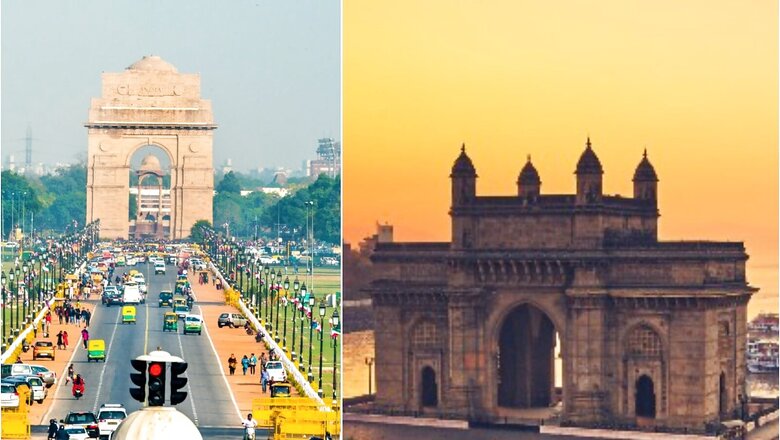
views
Livability in a city, over the past 18 months, is strongly influenced by the extent of the ravages unleashed by the COVID-19 virus. The Economist Intelligence Unit’s (EIU) annual survey done in February 2021, “The Livability Index”, focuses on the pandemic’s impact on city rankings. It is a relief that no Indian city is in the list of 10 least livable cities, though residents of our largest metropolises might say the jury is still out till the 2022 index is released.
Expectedly, no Indian city is in the list of top 10 cities either. Somewhat unexpectedly nor are any Chinese cities—our self-selected reference economy, now an assertive global power. Lower scores in qualitative indicators including citizen and press freedoms, reflecting the architecture of the Chinese state and polity—greatly at odds with the Economist’s penchant for visible liberalism—probably explain this anomaly. Meanwhile, Indian cities—products of India’s liberal democracy—score high only on being amongst the cheapest cities to get by in, per the EIUs “Cost of Living Index” 2019.
City Streets Not Paved with Gold
The travails of even India’s 53 biggest metropolises, each with a population above 1 million (2011–12 census), go beyond the lack of fiscal resources. The fiscal constraint is inexplicable considering that cities generated 53-63 per cent of the GDP with a 32 per cent share in population (2011–12). Efforts are on, in the Union government, to monitor the GDP share of cities more frequently. On average, per capita income in cities is higher than in rural areas, which explains the rush of migrants from peri-urban and rural areas to cities, in search of work, medical assistance, or better educational opportunities.
The consequential ready supply of cheap migratory labour is a mixed blessing. City resources perpetually fall behind the amount needed to extend public services to new arrivals. The draft Delhi Master Plan 2041 estimates that 85 per cent of residents cannot afford a house in planned areas and live in unauthorised or unplanned settlements making planned development a notional exercise.
Not surprisingly, in 2015–16, the Union government targeted the construction of 11.2 million “affordable” urban houses (a private good) at an outlay of Rs 7.35 trillion of which 5 million houses have been completed. One quarter of the cost is met by the Union government, one-fifth from the state governments whilst beneficiaries finance the residual 55 per cent through cheap, long-term loans. Going forward public-private partnership (PPP) financed affordable rental urban housing (a public good) is being explored to meet the needs of immigrants.
Reluctant Urbanites
Of India’s 7,935 cities (2011-12 census), nearly half (3,894) are unwilling to be classified as cities. Their reluctance stems from the extra costs for city residents—an annual property tax, higher fees for transfer of property, higher utility charges, restrictive land use regulations and building codes, and withdrawal of the extensive rural subsidies, without much improvement in the quality of utility services, since in large villages, pocket boroughs are similarly served.
Even the 4,041 recognised cities face a fiscal vacuum. Revenue from import duties, Income Tax, Goods and Services Tax—a value added sales tax—and excise duties—tax on the production of specified goods—are reserved for the Union and state governments. Even the fee for registration of property transfers in “property purchase crazy” India accrues to the relevant state government and not to the city, in which the property is situated.
Cities must accept a share of tax revenues, devolved to them by the quinquennial Finance Commission from the Union tax basket or by similar state-level finance commissions. Expectedly, states—focused on malleable, rural votes—give short-shrift to urban fiscal needs.
Constitutional Oddities
City governments also lack original powers under the Constitution of India (Part IXA Article 243 W to ZA), which requires individual states to legislate city mandates, even though the Twelfth Schedule specifies 18 functional areas as city government mandates.
This hierarchical, vertically proscribed view of how functional mandates should be allocated across spatial constitutional entities (union, states, and cities) does not align with the principles of subsidiarity. Adequately financed and professionally managed, mega-cities can provide public services at a scale far better than a remote Union or state government, constrained by multiple objectives and a varied clientele across regional, rural, and urban segments. Sadly, our city governments suffer from the lack of political gravitas.
No Takers for City Politics
It is telling that Indian politicians and bureaucrats view public service, even in the biggest city governments, as an inferior career option to serving the state or Union governments. In India, unlike in France, the United Kingdom, or the United States, no city mayor has yet been Prime Minister of India. Even amongst the current Members of Parliament, only a handful have honed their political skills in city government.
This perverse political valuation of city level experience is backward looking. Even a decade ago, in 2011-12, the largest city—Greater Mumbai, population 18.4 million, was bigger than 13 of the smallest states, including Delhi. Even the smallest of the 18 biggest cities—Kozhikode in Kerala with a population 2.03 million—was bigger than any of the five smallest states, including Goa.
Growth by Default
Decadal growth in cities increased from 1.5X of national growth in the previous decade, to 1.8X during 2001 to 2011. The trend has continued till 2021 and could continue over the next two decades to 2045. Pitching their political and executive management at subaltern levels is hiding our heads in the sand.
Given their complexities—dense populations, higher citizen expectations, shorter response times for managing emergencies, significantly higher costs from disasters and shutdowns and their “melting pot” character—each city should have its own, competitively recruited, permanent cadres and political managers, adept at city governance.
The international evidence points to urban agglomerations being nodes of high growth and magnets for investment, innovation, and inclusion. Indian cities serve a special social objective, being safe havens for seekers of higher levels of individual freedom, gender equality, escape from traditional identities linked to caste or religion, access to networks of knowledge or pathways to international collaboration.
Strengthening the Umbilical Knot between Cities and Peripheral Rural Areas
Admittedly, cities must share the ecosystem they co-inhabit with the surrounding peri-urban and rural areas in mutually beneficial partnerships to end “free rides” in natural resource and environmental management. Direct negotiations between state governments, which administer rural areas and cities, is therefore critical for productive agreements, which leverage the economic strength of cities to benefit the regional ecosystem.
Cities could provide financial incentives to utilise agricultural waste for electricity generation or buy solar power generated in rural areas, use non-degradable waste for road construction or subsidise organic farming practices and “common blue-green reserves” for a clean, sustainable, regional environment. To encourage such bilateral negotiations and mutually beneficial agreements, enhancing the political profile of city government versus state governments is crucial.
Shun Ad-hoc Quick Wins in City Governance
There is a good case for elevating the constitutional status of mega urban conglomerations (population above 1 million). By 2030, there will be 69 such million-plus cities. Other than the state capitals of the bigger states, Surat in Gujarat and Pune in Maharashtra were already 5 million-plus cities in 2011.
Retaining the municipal profile of a city whilst empowering the mayor with executive and financial powers to take on additional responsibilities is a better model than simply upgrading them to quasi-state government status if conflicting mandates which emerge with a state-within-a-state model, as in Delhi and Puducherry, are to be avoided.
A new city governance framework enhancing the original constitutional executive and financial powers of city governments, consistent with the core mandates of state governments, is necessary, if cities are to be free of constraining state governments and yet remain fiscally stable.
Cities as Models of Shared and Sustainable Growth
At capita current GDP (2019) of US $2101, India ranks just below Nigeria and Ghana. This explains why the IESE 174 city global survey “Cities in Motion” 2019 ranks Mumbai, Delhi, and Kolkata in the bottom-most decile, whilst Bengaluru ranks a shade better in the second lowest decile along with Tianjin (China), Kuwait, and Cape Town (South Africa).
But economic performance alone does not add up to a great city. China ranks in the top one-third of economies on a per capita GDP basis but only one city—Shanghai—is in the fourth-highest decile whilst Beijing is close to median rank. Two others—Guangzhou and Shenzhen— rank even lower, figuring in the seventh decile from the top.
Despite low per capita GDP levels, India ties with France as the fifth-largest economy, with GDP at US $2.6 trillion (2020 current terms) and could nudge ageing Germany and eventually Japan aside, for third place in a decade. Restructuring our million-plus cities, as autonomous drivers of regional growth, will be critical for getting there whilst diluting the pernicious rural-urban duality, in pursuit of sustainable and equitable growth.
This article was first published on ORF.
The author is adviser, ORF. The views expressed in this article are those of the author and do not represent the stand of this publication.
Read all the Latest News, Breaking News and Special: Live-updating IPL 2022 auction tally | IPL Mega Auction Live Updates here.



















Comments
0 comment